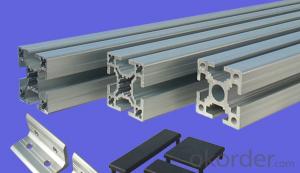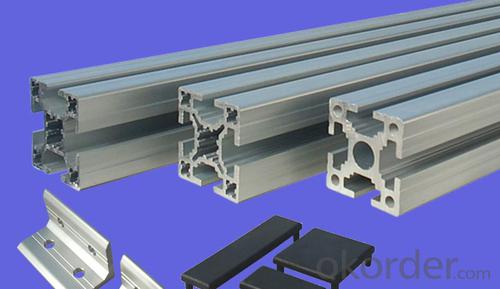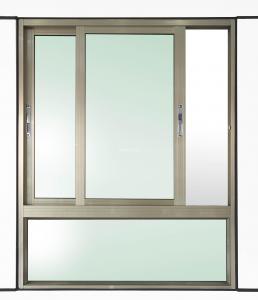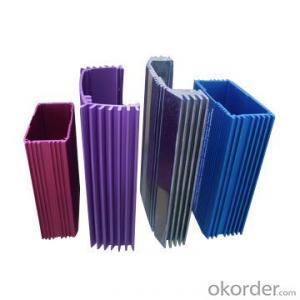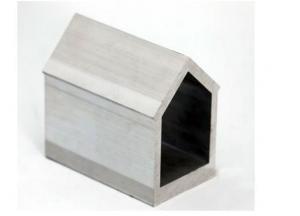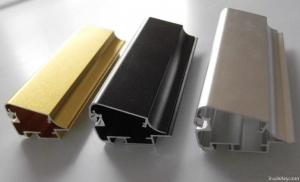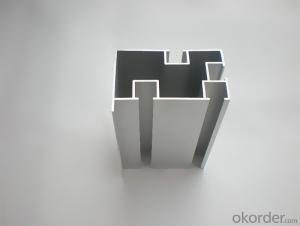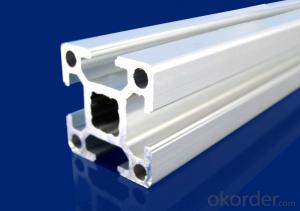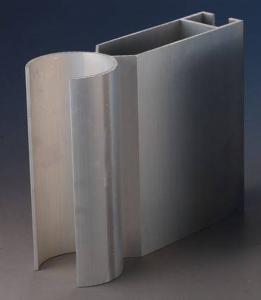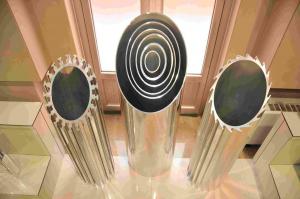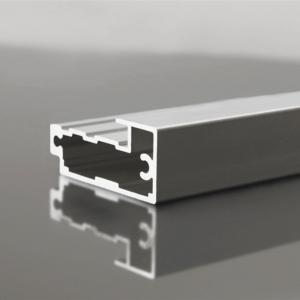Aluminum Extrusion Profiles Illinois - Electrophoresis Aluminium Profile 6003 Quality
- Loading Port:
- Guangzhou
- Payment Terms:
- TT OR LC
- Min Order Qty:
- 5 m.t.
- Supply Capability:
- 1000 m.t./month
OKorder Service Pledge
OKorder Financial Service
You Might Also Like
Specification
1.Structure of Electrophoresis Aluminium Profile 6003 Quality Description:
Anodizing (also spelled anodising, particularly in the UK and Australia) is an electrolytic passivation process used to increase the thickness of the natural oxide layer on the surface of metal parts. Anodized aluminium surfaces, for example, are harder than aluminium but have low to moderate wear resistance that can be improved with increasing thickness or by applying suitable sealing substances.
2.Main Features of the Electrophoresis Aluminium Profile 6003 Quality:
High corrosion-resistance;
weather-resistance;
heat-resistance;
alkali-resistance and impact-resistance properties.
3.Electrophoresis Aluminium Profile 6003 Quality Images:
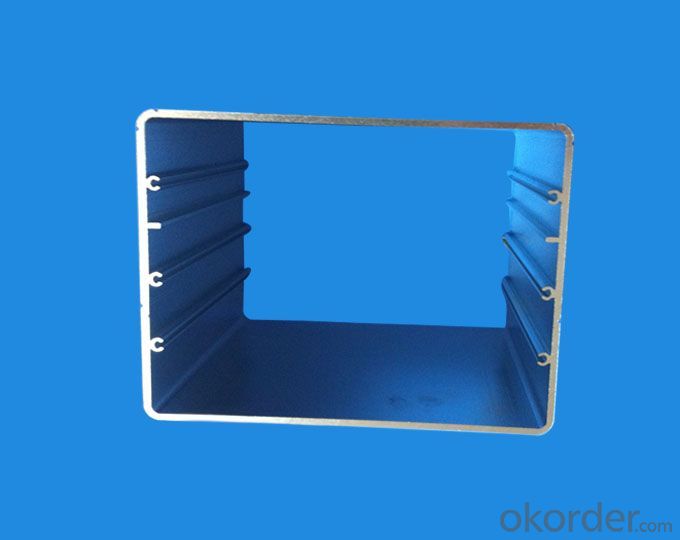


4.Aluminium Profile for Cars Auto-parts Good Quality Specification:
1. Material: 6063,6061,6060,6005,6005A,etc.
2. Temper: T5 or T6
3. Finish: Mill finish, anodizing, powder coating, electrophoresis, wooden transfer or pvdf/carbon-flouride coated, polishing, brushing, sand blasting
4. Various colors: Silver, bronze, black, gold, blue, grey, champagne, bright, etc.
5. Machining: Cutting, punching, drilling, tapping, milling, bending, welding, CNC etc.
5.FAQ:
①How about your company?
A world class manufacturer & supplier of castings forging in carbon steel and alloy steel,is one of the large-scale professional investment casting production bases in China, consisting of both casting foundry forging and machining factory. Annually more than 8000 tons Precision casting and forging parts are exported to markets in Europe, America and Japan. OEM casting and forging service available according to customer’s requirements.
②How to guarantee the quality of the products?
We have established the international advanced quality management system,every link from raw material to final product we have strict quality test;We resolutely put an end to unqualified products flowing into the market. At the same time, we will provide necessary follow-up service assurance.
- Q: Is it possible to utilize aluminum profiles in the construction or structure of commercial buildings and factories?
- <p>Yes, aluminum profiles are commonly used in commercial buildings and factories due to their strength, durability, and lightweight properties. They are ideal for constructing frameworks, window and door frames, and support structures. The corrosion resistance of aluminum also makes it suitable for industrial environments where exposure to harsh chemicals or weather conditions is a concern. Additionally, aluminum profiles are easy to maintain and can be recycled, contributing to the sustainability of construction projects.</p>
- Q: What are the advantages of using aluminum profiles in the mining industry?
- There are several advantages of using aluminum profiles in the mining industry. Firstly, aluminum is a lightweight material, which makes it easier to transport and install in remote mining locations. Additionally, aluminum profiles are highly durable and resistant to corrosion, making them suitable for harsh mining environments. They also offer excellent thermal conductivity, allowing for efficient heat dissipation in heavy machinery. Furthermore, aluminum profiles can be easily molded and customized, providing flexibility in designing mining infrastructure. Lastly, aluminum is a sustainable and recyclable material, aligning with the growing demand for eco-friendly practices in the mining industry.
- Q: How do aluminum profiles contribute to lightweight construction?
- Aluminum profiles play a significant role in lightweight construction due to their inherent properties and versatile applications. Firstly, aluminum is a lightweight material itself, with a density that is about one-third of steel. This means that using aluminum profiles instead of heavier materials like steel or concrete helps to reduce the overall weight of the structure or product. The lightweight nature of aluminum profiles brings several advantages to the construction industry. One of the key benefits is that it allows for easier handling and installation, reducing the need for heavy machinery and labor-intensive processes. This not only improves the efficiency of construction projects but also reduces costs. Moreover, the use of aluminum profiles in lightweight construction contributes to energy efficiency. Aluminum is an excellent conductor of heat and electricity, which means it can effectively dissipate heat and reduce energy consumption in buildings. This property is particularly beneficial for constructing energy-efficient buildings and helps to meet sustainability goals. Another aspect where aluminum profiles contribute to lightweight construction is their exceptional strength-to-weight ratio. Despite being lightweight, aluminum profiles possess high tensile strength, which makes them highly durable and capable of withstanding various loads and stresses. This characteristic allows for the design of strong and stable structures while minimizing material usage. Additionally, aluminum profiles offer design flexibility and versatility. They can be extruded into various shapes and sizes, enabling architects and designers to create complex and innovative structures. The ability to customize profiles according to specific project requirements enhances the architectural possibilities in lightweight construction. Furthermore, aluminum profiles are corrosion-resistant, which significantly extends their lifespan and reduces maintenance costs. This makes them suitable for applications in different climates and environments, including coastal regions where saltwater corrosion is prevalent. In summary, aluminum profiles contribute to lightweight construction by reducing the overall weight of structures, improving energy efficiency, providing strength and durability, offering design flexibility, and ensuring resistance to corrosion. These factors make aluminum profiles a preferred choice in a wide range of construction projects, from residential buildings to large-scale infrastructure.
- Q: It is now the most urban rail trains, as well as the manufacturing methods and processes of large parts profiles used in the manufacture of CRH3 type emus.
- According to the technical requirements of the components, the process is as follows: aluminum ingot - Dissolution alloy ratio - into rod material - extrusion forming - aging - surface treatment - cut by component size - finished product!
- Q: Acrylic coating principle, coating on the aluminum section, he and fluorocarbon powder spraying, what is the difference
- Compared with the other two spraying methods, the best quality, the most beautiful appearance, but the price is expensive, not green. Used in high-end buildings, commercial building more
- Q: Is it possible to utilize aluminum profiles in the construction of carports or garages?
- <p>Yes, aluminum profiles can be used for carports or garages. They are known for their durability, corrosion resistance, and lightweight properties, making them ideal for such structures. Aluminum profiles are also easy to install and maintain, and they can withstand various weather conditions without rusting. This material is commonly used for the framing and support structures in carports and garages, offering a cost-effective and long-lasting solution.</p>
- Q: What are the differences between standard and non - standard shapes?
- Hello, not within the scope of the national standard, so it is called non-standard,The standard piece is within the national standardThat's the difference,This GB standard can be found, are unified
- Q: How do aluminum profiles perform in terms of electrical conductivity?
- Aluminum profiles have relatively low electrical conductivity compared to other metals such as copper or silver, but they still conduct electricity to some extent. They can be used for applications where moderate conductivity is required, but for high-performance electrical applications, other metals may be more suitable.
- Q: Can aluminum profiles be an alternative to wood in construction?
- Yes, aluminum profiles can be a viable alternative to wood in construction. Aluminum profiles offer several advantages over wood, making them a popular choice in many construction projects. Firstly, aluminum profiles are lightweight yet strong, allowing for easy handling and installation. This characteristic makes them suitable for various applications, including frames for doors, windows, curtain walls, and partitions. Additionally, aluminum profiles have excellent durability and resistance to weathering, corrosion, and pests, making them a long-lasting and low-maintenance option. Furthermore, aluminum profiles have inherent fire-resistant properties, which can enhance safety in construction. Unlike wood, aluminum does not burn, and it has a high melting point, making it less likely to contribute to the spread of fires. In terms of sustainability, aluminum profiles can offer environmental benefits. Aluminum is a highly recyclable material, meaning that it can be reused and repurposed multiple times without losing its properties. This recyclability reduces the environmental impact associated with construction projects and supports the circular economy. Another advantage of using aluminum profiles is their design versatility. Aluminum can be easily shaped and extruded into various profiles and sizes, allowing for customization and flexibility in architectural designs. This adaptability makes aluminum profiles suitable for both functional and aesthetic purposes in construction. However, it is important to note that aluminum profiles may have higher upfront costs compared to wood. Additionally, the thermal conductivity of aluminum is higher than that of wood, which means that aluminum profiles may require additional insulation to provide optimal thermal performance. In conclusion, aluminum profiles can be a viable alternative to wood in construction due to their lightweight, durability, fire resistance, sustainability, and design versatility. While there may be some considerations regarding cost and thermal conductivity, the benefits of aluminum profiles make them an attractive option for various construction applications.
- Q: Are aluminum profiles recyclable?
- Certainly! Aluminum profiles can be recycled, as aluminum is a material that can be melted and reused multiple times without losing its quality. These profiles, which find application in construction, transportation, and manufacturing, can be easily recycled by collecting them from old products or scrap material and sending them to a recycling facility. The recycling process involves shredding the profiles into small pieces, removing impurities, melting the aluminum, and casting it into new profiles or other aluminum products. By recycling aluminum profiles, we contribute to conserving natural resources, reducing energy consumption, and limiting environmental impact, as opposed to producing new aluminum from raw materials.
Send your message to us
Aluminum Extrusion Profiles Illinois - Electrophoresis Aluminium Profile 6003 Quality
- Loading Port:
- Guangzhou
- Payment Terms:
- TT OR LC
- Min Order Qty:
- 5 m.t.
- Supply Capability:
- 1000 m.t./month
OKorder Service Pledge
OKorder Financial Service
Similar products
Hot products
Hot Searches
Related keywords
